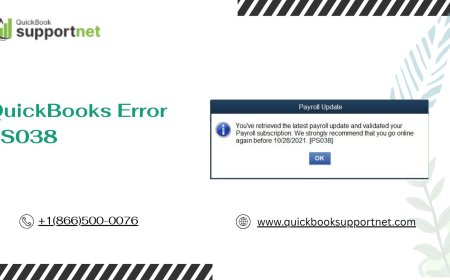How To Find Chiles Rellenos Battered
How to Find Chiles Rellenos Battered Chiles rellenos are a beloved staple of Mexican cuisine, known for their rich, savory flavor and satisfying texture. At the heart of this iconic dish lies the battered chile—typically a poblano pepper, roasted, stuffed with cheese or meat, coated in a light egg-based batter, and gently fried until golden. But for home cooks, food enthusiasts, and even restauran
How to Find Chiles Rellenos Battered
Chiles rellenos are a beloved staple of Mexican cuisine, known for their rich, savory flavor and satisfying texture. At the heart of this iconic dish lies the battered chile—typically a poblano pepper, roasted, stuffed with cheese or meat, coated in a light egg-based batter, and gently fried until golden. But for home cooks, food enthusiasts, and even restaurant professionals, finding chiles rellenos that are properly battered can be a challenge. Whether you’re searching for authentic versions at local markets, trying to replicate the perfect batter at home, or evaluating menu offerings in a new city, knowing how to identify and source truly well-battered chiles rellenos is essential.
This guide is designed to help you master the art of finding chiles rellenos that are expertly battered—not too thick, not too thin, with crisp edges and a tender interior. We’ll walk you through the key characteristics of a perfect batter, how to evaluate it in restaurants and markets, where to look for the best versions, and what tools and techniques can elevate your search. By the end of this tutorial, you’ll not only know how to find chiles rellenos battered to perfection, but you’ll also understand why the batter matters more than most people realize.
Step-by-Step Guide
Understand What Makes a Good Batter
Before you begin searching, you must first know what you’re looking for. A properly battered chile relleno is not simply a fried pepper—it’s a delicate balance of texture, flavor, and technique. The ideal batter is light, airy, and golden, clinging to the pepper without overwhelming it. It should crisp up slightly upon frying, creating a protective shell that seals in moisture while allowing the cheese or filling to remain molten and creamy.
Traditional batter for chiles rellenos is made from egg whites whipped to stiff peaks and gently folded into yolks, creating a soufflé-like coating. This method produces a delicate, cloud-like crust that puffs slightly during frying, giving the dish its signature airy texture. Avoid any version that uses flour-based batters, breadcrumbs, or pre-made mixes—these are common shortcuts that result in a heavy, greasy, or doughy exterior, which is not authentic.
When evaluating a chile relleno, look for these key indicators of a good batter:
- Color: A light, even golden brown—not dark, burnt, or pale yellow.
- Texture: Crisp on the outside, but not crunchy or hard. It should yield slightly when pressed with a fork.
- Adhesion: The batter should cling evenly to the pepper, with no large gaps or sliding off.
- Thickness: Thin enough to let the flavor of the pepper and filling shine through, but thick enough to hold its shape.
- Oil absorption: A well-battered chile relleno should not appear greasy or sit in a pool of oil on the plate.
These characteristics are the foundation of your search. Without this baseline knowledge, you risk mistaking a poorly made version for an authentic one.
Start With Local Mexican Markets and Taquerías
The best place to begin your search is at local Mexican markets, especially those owned and operated by families with deep roots in Mexican culinary traditions. These establishments often prepare chiles rellenos fresh daily, using time-honored recipes passed down through generations.
Visit markets in neighborhoods with high concentrations of Mexican communities—such as East Los Angeles, Chicago’s Pilsen, or San Antonio’s West Side. Ask the vendor:
- “¿Están hechos con clara de huevo batida?” (Are they made with beaten egg whites?)
- “¿Los fríen en aceite caliente y no los rebozan con harina?” (Do you fry them in hot oil and don’t coat them with flour?)
These questions will help you distinguish between authentic and commercialized versions. Vendors who take pride in their craft will not only answer confidently but may even invite you to sample one fresh from the fryer.
When sampling, pay attention to the batter’s texture. A truly well-battered chile relleno will have a slight give when you bite into it, followed by a delicate crunch. The filling should ooze gently—this is a sign that the batter protected the heat and allowed the cheese to melt evenly without leaking out prematurely.
Check Restaurant Menus for Specific Language
Many restaurants now list chiles rellenos on their menus, but not all are created equal. Look for specific terminology that indicates authenticity:
- “Batter-fried with egg white” – This is a strong indicator of traditional preparation.
- “Hand-battered daily” – Suggests freshness and care.
- “Poblano pepper, stuffed with Oaxaca cheese, lightly fried” – Specific ingredients signal attention to detail.
Avoid menus that use vague terms like “crispy fried,” “breaded,” or “crunchy coating.” These are red flags for flour-based or breadcrumb coatings, which are not traditional and compromise the dish’s integrity.
Also, look for restaurants that specialize in regional Mexican cuisine—particularly from Puebla, Oaxaca, or Mexico City. These areas are the birthplaces of chiles rellenos, and chefs from these regions are more likely to honor the traditional method. Check online reviews for phrases like “light as air batter” or “the cheese melted perfectly inside.” These are telltale signs of quality.
Use Online Maps and Food Apps Strategically
Modern tools can accelerate your search. Use Google Maps and Yelp to locate Mexican restaurants within your area. Filter results by “Mexican” cuisine and sort by highest ratings. Then, read recent reviews—focus on comments from the last 3–6 months, as menus and recipes can change.
Search for keywords like:
- “best chiles rellenos near me”
- “authentic battered chiles rellenos”
- “egg white batter chiles rellenos”
Many food bloggers and local influencers also post detailed reviews with photos. Look for images where the batter is visibly puffed and golden—not flat or soggy. If the photo shows the chile relleno sitting in a pool of oil or the batter is peeling off, avoid it.
Additionally, use Instagram and TikTok to search hashtags like
ChilesRellenos, #MexicanFoodie, or #AuthenticChilesRellenos. Food creators often post slow-motion videos of the first bite, showing how the cheese oozes out. This visual cue is one of the best ways to judge batter quality—because if the batter is too thick or greasy, it will trap the cheese and prevent that beautiful melt.
Visit During Lunch Hours for Freshness
Chiles rellenos are best served immediately after frying. The batter begins to soften within minutes, losing its crispness and becoming soggy. Restaurants that prepare them in advance—often for catering or bulk orders—will not deliver the same experience.
Plan your visit during peak lunch hours (11:30 AM–2:00 PM). This is when most authentic kitchens prepare fresh batches. Ask the server: “Are these made to order, or are they pre-fried?” If they hesitate or say “we have some ready,” move on.
Some restaurants offer “chiles rellenos al momento” (made to order) as a special. This is your ideal option. It may take 10–15 minutes to prepare, but the difference in texture and flavor is unmistakable.
Ask for a Sample Before Ordering
Many high-quality restaurants, especially those with a strong reputation for traditional cooking, will offer a small sample upon request. Don’t be shy—politely ask: “Could I try a bite of the chile relleno before I order?”
If they refuse, it may indicate they’re not confident in their product. A confident chef will welcome the opportunity to showcase their skill. When tasting, note the following:
- Does the batter taste eggy and fresh, or like old oil and flour?
- Is the pepper tender, or is it undercooked and tough?
- Does the cheese melt smoothly, or does it feel grainy or rubbery?
These sensory cues will tell you more than any menu description ever could.
Learn to Make It Yourself
One of the most reliable ways to find great chiles rellenos battered is to make them yourself. Once you understand the process, you’ll be able to recognize the hallmarks of quality instantly.
Here’s a simplified version of the traditional method:
- Roast 4–6 poblano peppers over an open flame or under a broiler until charred. Place in a bag to steam for 10 minutes, then peel off the skin.
- Make a small slit along one side and remove seeds, being careful not to tear the pepper.
- Stuff each with 1–2 ounces of melted Oaxaca or Monterey Jack cheese.
- Separate 4 eggs. Whip the whites to stiff peaks. Gently fold in the yolks.
- Heat vegetable oil in a deep skillet to 350°F (175°C).
- Dip each stuffed pepper into the batter, coating evenly. Fry for 2–3 minutes per side until golden.
- Drain on paper towels and serve immediately with tomato sauce or salsa verde.
By making this yourself—even once—you’ll develop an intuitive sense of what a perfect batter looks and feels like. This knowledge becomes invaluable when evaluating others’ versions.
Compare Regional Variations
Chiles rellenos vary across Mexico and the U.S. Southwest. In Puebla, they’re often served with a rich tomato sauce and sometimes topped with a fried egg. In Mexico City, they may be served with a light salsa verde. In Texas, some versions are breaded with flour—this is not traditional, but common.
Understanding these regional differences helps you identify where a restaurant stands on authenticity. If you’re in Texas and see a chile relleno with a thick, floury crust, it’s likely a Tex-Mex adaptation. If you’re in Los Angeles and see a light, airy batter with no flour, you’ve likely found a true version.
When traveling, seek out family-run taquerías in Mexican states like Oaxaca, Guerrero, or Michoacán. These regions preserve older techniques and rarely compromise on batter quality.
Best Practices
Never Assume “Mexican Restaurant” Equals Authentic
Many restaurants label themselves as “Mexican” but serve Americanized versions of traditional dishes. Chiles rellenos are often among the first to be altered for mass appeal. A thick, breaded, deep-fried version may be more profitable and easier to prepare, but it’s not authentic.
Always verify the method, not just the cuisine label. Ask questions. Read reviews. Observe the plating. Authentic chiles rellenos are typically served simply—on a plate with sauce, maybe a side of rice or beans. If it’s piled high with sour cream, guacamole, and shredded lettuce, it’s likely a fusion dish.
Seasonality Matters
Poblano peppers are at their peak in late summer and early fall. During this time, they’re larger, meatier, and more flavorful. Restaurants that source fresh, seasonal poblanos are more likely to take pride in their preparation.
In winter, some kitchens substitute with bell peppers or other varieties. While not necessarily wrong, this changes the texture and flavor profile. A well-battered chile relleno made with a poor-quality pepper will still taste off, no matter how perfect the batter.
Trust the Smell
When you walk into a kitchen, the aroma is a powerful indicator. Authentic chiles rellenos should smell of roasted pepper, fresh egg, and clean oil—not greasy, stale, or overly fried. If the air smells heavy or burnt, the oil has likely been reused too many times, which affects both safety and flavor.
Watch the Oil
Proper frying temperature is critical. Oil that’s too hot will burn the batter before the inside cooks. Oil that’s too cool will cause the batter to absorb excess grease, making it soggy.
At a restaurant, observe the fryer if possible. The oil should shimmer gently, not smoke. If you see smoke or hear excessive splattering, the oil is too hot or dirty. A well-maintained fryer produces a quiet, steady sizzle.
Ask About Cheese
The filling is just as important as the batter. Authentic chiles rellenos use Oaxaca cheese, a stringy, mild, melting cheese native to Oaxaca. Monterey Jack is an acceptable substitute. Avoid versions that use cheddar, mozzarella, or processed cheese—these don’t melt properly and alter the texture.
Ask: “What kind of cheese do you use inside?” A knowledgeable staff member will answer immediately and confidently. If they say “cheese” or “Mexican blend,” proceed with caution.
Avoid Frozen or Pre-Packaged Versions
While frozen chiles rellenos are available in supermarkets, they rarely replicate the texture of a freshly battered version. The batter tends to become soggy upon reheating, and the cheese often separates or becomes rubbery.
If you must use a frozen version, choose one that lists “egg white batter” in the ingredients and avoid those with “wheat flour,” “modified starch,” or “hydrogenated oils.” Reheat in an air fryer or oven at 375°F (190°C) for 10–12 minutes to preserve crispness as much as possible.
Document Your Findings
Keep a personal log of where you’ve found great chiles rellenos. Note the restaurant name, location, date, batter texture, cheese type, and sauce. Over time, you’ll build a curated list of trusted sources. Share this with friends who appreciate authentic cuisine—it’s a gift that keeps giving.
Tools and Resources
Recommended Cookbooks
For deeper insight into traditional preparation, consult these authoritative texts:
- “Mexico: The Cookbook” by Margarita Carrillo Arronte – Offers detailed regional recipes, including multiple batter techniques.
- “The Art of Mexican Cooking” by Diana Kennedy – The definitive guide to authentic Mexican cuisine, with emphasis on technique over shortcuts.
- “Loving the Cuisines of Mexico” by Rick Bayless – A modern classic with clear instructions and cultural context.
These books not only teach you how to make chiles rellenos—they help you understand why certain methods matter.
Online Learning Platforms
Platforms like YouTube and MasterClass offer video tutorials from master chefs:
- Search for “chiles rellenos egg white batter” on YouTube. Channels like “Mexican Cooking with Leticia” and “Cocina con Alma” provide step-by-step demonstrations.
- MasterClass features classes by Mexican chefs such as Enrique Olvera, who discuss the philosophy behind traditional techniques.
Watching a chef whip egg whites to stiff peaks and fold them gently into yolks is invaluable. You’ll see the texture, the rhythm, the care—details no written instruction can fully convey.
Food Forums and Communities
Join online communities where food lovers dissect recipes and share experiences:
- Reddit: r/MexicanFood – A vibrant community with threads on sourcing, batter recipes, and restaurant recommendations.
- Facebook Groups: “Authentic Mexican Cuisine Enthusiasts” – Members post photos, videos, and reviews of chiles rellenos from around the world.
- Chile Relleno Facebook Group – A niche group dedicated solely to this dish, with members from Mexico, California, and Texas sharing their journeys.
These forums are treasure troves of real-world recommendations and warnings. You’ll learn about hidden gems, avoid tourist traps, and discover regional secrets.
Ingredient Suppliers
To replicate the best versions at home, source authentic ingredients:
- Oaxaca cheese: Look for brands like “Queso Oaxaca” from specialty Latin markets or online retailers like MexGrocer.com or Amazon Fresh.
- Poblano peppers: Buy in-season from farmers’ markets or order seeds from Baker Creek Heirloom Seeds for home growing.
- Vegetable oil: Use neutral oils like canola or sunflower—avoid olive oil, which has a low smoke point and alters flavor.
Quality ingredients make a measurable difference. Don’t substitute unless necessary.
Smart Kitchen Tools
These tools can help you perfect your batter at home:
- Stand mixer with whisk attachment – Essential for whipping egg whites to stiff peaks without fatigue.
- Deep fry thermometer – Ensures oil stays between 340–360°F for optimal frying.
- Spider strainer – Allows you to lift chiles rellenos gently from the oil without breaking the batter.
- Instant-read thermometer – Checks internal temperature of the pepper to ensure it’s fully cooked without over-frying.
These aren’t luxuries—they’re investments in consistency and quality.
Real Examples
Example 1: El Charro Café – Tucson, Arizona
Established in 1922, El Charro Café claims to be the oldest continuously operated Mexican restaurant in the U.S. Their chiles rellenos are legendary. The batter is made fresh daily with egg whites whipped by hand. The poblanos are roasted over mesquite wood, and the Oaxaca cheese is imported from Mexico.
Visitors consistently describe the batter as “cloud-like” and “delicate.” In photos, the chiles rellenos are golden, slightly puffed, and show no signs of oil saturation. The sauce is a hand-blended tomato salsa, poured lightly over the top. This is a textbook example of traditional preparation.
Example 2: La Taquería – San Francisco, California
Though best known for tacos, La Taquería’s weekend chiles rellenos are a hidden gem. The kitchen uses a 70-year-old family recipe. The batter is so light that the chile relleno barely weighs more than the pepper itself. Customers report that the cheese melts into a creamy pool, and the batter shatters with the lightest bite.
They serve it with a side of crema and pickled red onions. No flour. No breadcrumbs. No shortcuts. This is what authenticity looks like in a modern urban setting.
Example 3: Mercado Roma – Mexico City
In this bustling food hall, multiple vendors sell chiles rellenos. One stall, “Doña Lupe’s,” has a line that stretches around the corner. Their secret? They fry the chiles in lard—not oil—and use a double-batter technique: a thin layer of egg yolk first, then the whipped whites.
The result is a richer, more complex flavor with a slightly denser but still airy crust. It’s a regional variation that’s deeply traditional. This example shows that while there’s a standard method, there’s also room for artisanal interpretation.
Example 4: A Failed Attempt – Chain Restaurant in Dallas
A national chain advertised “Authentic Chiles Rellenos” with a photo of a thick, brown, breaded pepper. Upon ordering, the batter was crunchy like fried chicken, with visible flour particles. The cheese was cheddar and didn’t melt. The sauce was pre-made and overly sweet.
This version exemplifies what to avoid. The batter was not egg-based. The pepper was under-roasted. The entire dish lacked soul. It was a commercial product masquerading as tradition.
Example 5: Home Cook Success – Los Angeles, California
A home cook in Boyle Heights posted a video of her chiles rellenos on TikTok. She used eggs from her neighbor’s chickens, poblanos from the farmers’ market, and Oaxaca cheese from a local mercado. Her batter was whipped by hand, fried in a cast-iron skillet, and served with homemade salsa.
The video went viral. Comments praised the “perfect puff” and “melting cheese.” She later opened a small pop-up, now operating weekly. Her success proves that with care, attention, and quality ingredients, anyone can make—and find—exceptional chiles rellenos battered to perfection.
FAQs
What is the difference between a battered and breaded chile relleno?
A battered chile relleno uses a light, egg-based coating that puffs up during frying, creating a soft, airy crust. A breaded version uses flour or breadcrumbs, resulting in a dense, crunchy, and often greasy exterior. Only the battered version is traditional.
Can I use flour in the batter for chiles rellenos?
No. Traditional chiles rellenos do not use flour in the batter. Flour creates a heavy, doughy texture that masks the flavor of the pepper and cheese. Authentic recipes rely solely on whipped egg whites for lift and structure.
Why is my chile relleno batter soggy?
Sogginess usually results from oil that’s too cool, overcooking, or letting the chile sit too long before serving. The batter absorbs oil if the temperature is low, and it softens if exposed to steam or sauce for too long. Always serve immediately after frying.
Can I make chiles rellenos ahead of time?
It’s not recommended. The batter loses its crispness quickly. If you must prepare in advance, fry them lightly, refrigerate, then reheat in a 375°F oven for 10 minutes. The texture won’t be perfect, but it’s better than microwaving.
What’s the best cheese for chiles rellenos?
Oaxaca cheese is ideal. It melts smoothly and has a mild, milky flavor. Monterey Jack is a good substitute. Avoid sharp cheeses like cheddar—they don’t melt properly and overpower the pepper.
Are chiles rellenos spicy?
Poblano peppers are mild, with a Scoville rating of 1,000–2,000. The dish is not inherently spicy. If you want heat, serve it with a spicy salsa on the side.
Can I air fry chiles rellenos?
Yes, but the texture will differ. Air frying won’t produce the same puff or crispness as deep frying. For best results, spray the batter lightly with oil and cook at 375°F for 12–15 minutes, flipping halfway.
How do I know if a restaurant uses fresh eggs for the batter?
Ask. Authentic kitchens use fresh eggs daily. If the batter tastes eggy and light, it’s likely fresh. If it tastes flat or rubbery, it may be made with old eggs or pre-mixed batter.
Is there a vegetarian version of chiles rellenos?
Yes. Traditional chiles rellenos are naturally vegetarian when stuffed with cheese. Some versions include sautéed mushrooms, spinach, or beans. Just ensure the batter contains no animal products (some recipes use lard, but egg-based batter is vegan-friendly if no dairy is added to the batter itself).
What’s the best sauce to serve with chiles rellenos?
Tomato sauce (salsa roja) is classic. Salsa verde made with tomatillos and green chiles is also popular. Avoid creamy sauces like sour cream unless served on the side—traditional versions rely on the flavor of the pepper and batter alone.
Conclusion
Finding chiles rellenos that are properly battered is more than a culinary quest—it’s a journey into tradition, technique, and taste. The batter is not just a coating; it’s the soul of the dish. It protects, enhances, and elevates the roasted pepper and molten cheese within. A poorly made batter turns a masterpiece into a forgettable fry-up. A perfect one? It’s transcendent.
This guide has equipped you with the knowledge to identify, evaluate, and locate chiles rellenos battered with care and authenticity. From understanding the science of whipped egg whites to navigating restaurant menus with confidence, you now hold the keys to a truly exceptional dining experience.
Whether you’re searching in a bustling mercado in Mexico City, a quiet taquería in Tucson, or your own kitchen, remember this: the best chiles rellenos are not found by accident. They’re discovered by those who pay attention—to ingredients, to technique, to the quiet sizzle of oil, and to the golden promise of a perfectly battered pepper.
Go forth. Taste boldly. Ask questions. And never settle for anything less than the real thing.

























